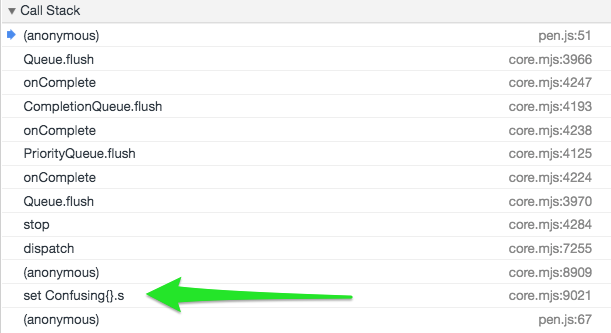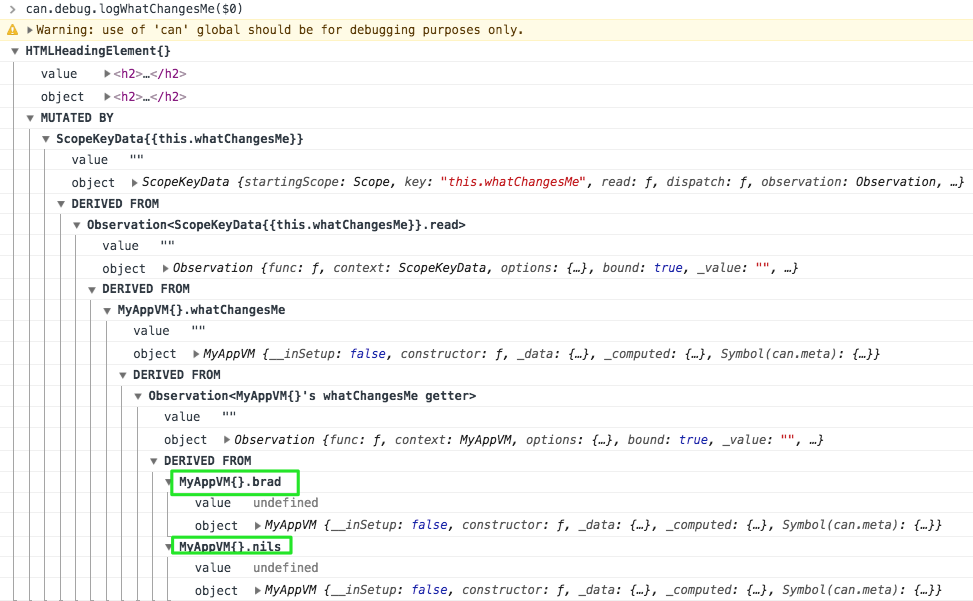CanJS provides two extremely useful debugging features:
- A cleaned up stack
- The ability to trace through what affects a value
A cleaned up stack
Many observable state mechanisms get caught up in a queue or event loop. This makes the native stack less useful. For example, this stack trace might tell us the first event that caused a value to change. But a lot of useful information is lost in CanJS's queuing system:

CanJS keeps its own stack, allowing you to more easily debug the changes that lead to your current situations The following shows each property that lead to the final result:

Watch this example on YouTube.
Trace through what affects a value
can.debug.logWhatChangesMe(element)
Using logWhatChanges me on the <h2> element in this CodePen shows which part of the view and the ViewModel the <h2>'s content is derived from:

Watch this example on YouTube.
For other CanJS debugging techniques, checkout this tutorial or CanJS's debugging guide.
![[ERR!]](https://pbs.twimg.com/profile_images/676907360280043520/lGjbjCiB_normal.jpg)
